2,3,6,7-Tetrahydro-1H,5H-benzo[ij]quinolizine-9-carboxaldehyde
- CAS NO.:33985-71-6
- Empirical Formula: C13H15NO
- Molecular Weight: 201.26
- MDL number: MFCD00151555
- SAFETY DATA SHEET (SDS)
- Update Date: 2024-12-18 14:08:57
![2,3,6,7-Tetrahydro-1H,5H-benzo[ij]quinolizine-9-carboxaldehyde Structural](https://img.chemicalbook.in/CAS/GIF/33985-71-6.gif)
Properties of 2,3,6,7-Tetrahydro-1H,5H-benzo[ij]quinolizine-9-carboxaldehyde
| Melting point: | 83 °C |
| Boiling point: | 404.8±44.0 °C(Predicted) |
| Density | 1.18±0.1 g/cm3(Predicted) |
| storage temp. | under inert gas (nitrogen or Argon) at 2-8°C |
| solubility | soluble in Methanol |
| form | powder to crystal |
| pka | 3.15±0.20(Predicted) |
| color | Light orange to Yellow to Green |
| EPA Substance Registry System | 1H,5H-Benzo[ij]quinolizine-9-carboxaldehyde, 2,3,6,7-tetrahydro- (33985-71-6) |
Safety information for 2,3,6,7-Tetrahydro-1H,5H-benzo[ij]quinolizine-9-carboxaldehyde
| Signal word | Warning |
| Pictogram(s) |
 Exclamation Mark Irritant GHS07 |
| GHS Hazard Statements |
H315:Skin corrosion/irritation H319:Serious eye damage/eye irritation |
| Precautionary Statement Codes |
P264:Wash hands thoroughly after handling. P264:Wash skin thouroughly after handling. P280:Wear protective gloves/protective clothing/eye protection/face protection. |
Computed Descriptors for 2,3,6,7-Tetrahydro-1H,5H-benzo[ij]quinolizine-9-carboxaldehyde
| InChIKey | XIIVBURSIWWDEO-UHFFFAOYSA-N |
New Products
4-Fluorophenylacetic acid 4-Methylphenylacetic acid N-Boc-D-alaninol N-BOC-D/L-ALANINOL Tert-butyl bis(2-chloroethyl)carbamate 3-Morpholino-1-(4-nitrophenyl)-5,6-dihydropyridin- 2(1H)-one Furan-2,5-Dicarboxylic Acid Tropic acid S-2-CHLORO PROPIONIC ACID ETHYL ISOCYANOACETATE 2-Bromo-1,3-Bis(Dimethylamino)Trimethinium Hexafluorophosphate (6-METHYL-[1,3]DITHIOLO[4,5-b]QUINOXALIN-2-ONE INDAZOLE-3-CARBOXYLIC ACID 4-IODO BENZOIC ACID (2-Hydroxyphenyl)acetonitrile 4-Bromopyrazole 5,6-Dimethoxyindanone 2-(Cyanocyclohexyl)acetic acid 4-methoxy-3,5-dinitropyridine 2-aminopropyl benzoate hydrochloride 1-(4-(aminomethyl)benzyl)urea hydrochloride diethyl 2-(2-((tertbutoxycarbonyl)amino) ethyl)malonate tert-butyl 4- (ureidomethyl)benzylcarbamate Ethyl-2-chloro((4-methoxyphenyl)hydrazono)acetateRelated products of tetrahydrofuran
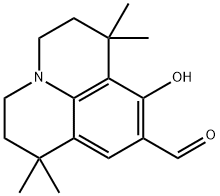
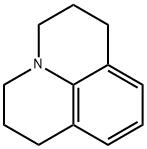
![1,1,7,7-TETRAMETHYL-2,3,6,7-TETRAHYDRO-1H,5H-PYRIDO[3,2,1-IJ] QUINOLINE](https://img.chemicalbook.in/CAS/GIF/325722-28-9.gif)
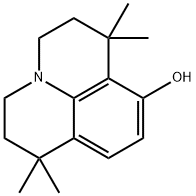
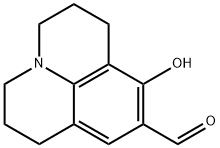


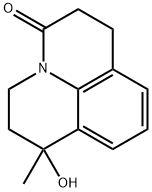
You may like
-
 9-Julolidinecarboxaldehyde CAS 33985-71-6View Details
9-Julolidinecarboxaldehyde CAS 33985-71-6View Details
33985-71-6 -
 2033-24-1 98%View Details
2033-24-1 98%View Details
2033-24-1 -
 1975-50-4 98%View Details
1975-50-4 98%View Details
1975-50-4 -
 2-HYDROXY BENZYL ALCOHOL 98%View Details
2-HYDROXY BENZYL ALCOHOL 98%View Details
90-01-7 -
 2-Chloro-1,3-Bis(Dimethylamino)Trimethinium Hexafluorophosphate 221615-75-4 98%View Details
2-Chloro-1,3-Bis(Dimethylamino)Trimethinium Hexafluorophosphate 221615-75-4 98%View Details
221615-75-4 -
 61397-56-6 CIS BROMO BENZOATE 98%View Details
61397-56-6 CIS BROMO BENZOATE 98%View Details
61397-56-6 -
 14714-50-2 (2-Hydroxyphenyl)acetonitrile 98+View Details
14714-50-2 (2-Hydroxyphenyl)acetonitrile 98+View Details
14714-50-2 -
 118753-70-1 98+View Details
118753-70-1 98+View Details
118753-70-1
Statement: All products displayed on this website are only used for non medical purposes such as industrial applications or scientific research, and cannot be used for clinical diagnosis or treatment of humans or animals. They are not medicinal or edible.